Endless sea views, crystal-clear coves, and charming villages make the Cap de Creus loop an incredible 2-day cycling route in Costa Brava.
Located in the Cap de Creus Natural Park, this circular mountain bike journey covers 60 km and links three towns in Costa Brava: Port de la Selva, Cadaqués, and Roses.
We cycled the Cap de Creus loop at the end of May 2023, starting and ending in Port de la Selva. It was our first bikepacking adventure, and one we’ll remember for the rest of our lives!
Here are our review, tips, and photos to help you plan your Cap de Creus loop adventure! Ready to explore Costa Brava on two wheels?
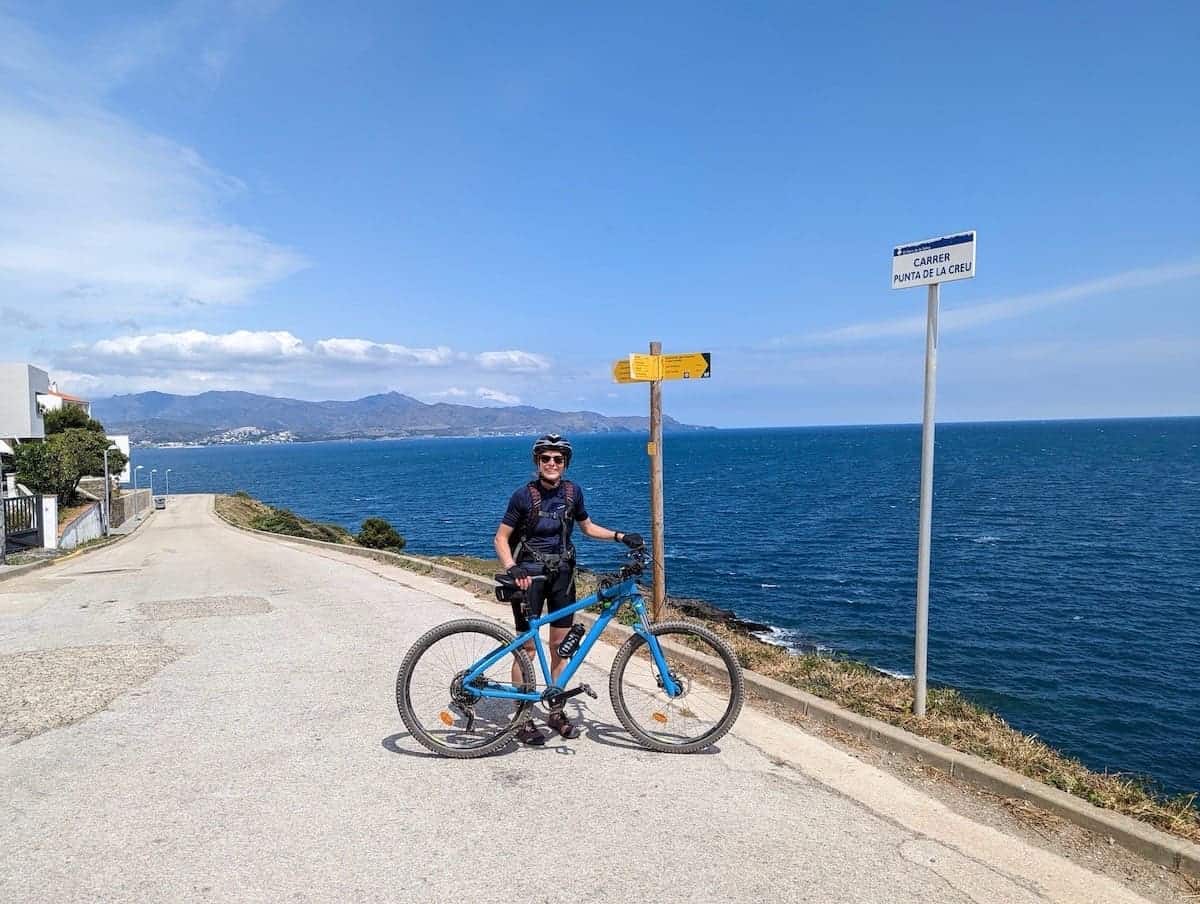
Technical details
🥾 Distance: 60 km
🟠 Level: Moderate-Difficult
⬆️ Elevation gain: 1.410 m
⏱ Duration: 2 days
🗓 When to go: You can do this route all year long. However, we recommend avoiding mid-June to mid-September, as it’s too hot and crowded. The best time for cycling in Costa Brava is spring and autumn.
We graded the route as moderately difficult because of the cumulative gain. Although the distance covered isn’t large, the terrain is steep at some points, and the elevation gain is considerable. If you are new to long rides, we recommend using an electric mountain bike.
🧭 Wikiloc track
You can check the track of this bike route on our Wikiloc profile.
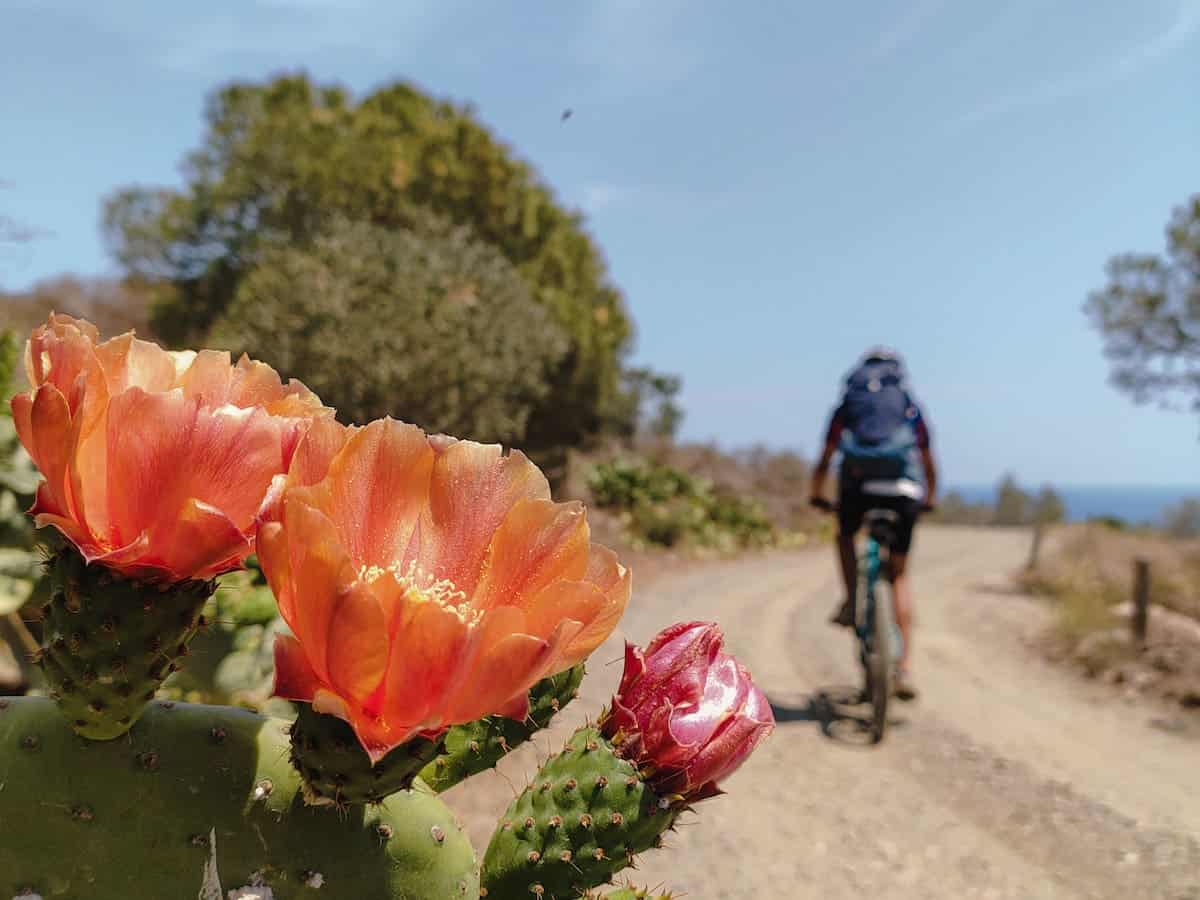
Where does the route start?
As it’s a circular route that passes through various towns, you can start it at several points.
👉 Option 1: Port de la Selva
We started in Port de la Selva. This way, day 1 is the hardest (39.9 km), and day 2 is perfect for ending in the afternoon (20.1 km). Then, you can take some time to explore the charming village of Port de la Selva and enjoy a wonderful dinner. Also, there is a free parking lot in Port de la Selva, which is excellent if you plan on getting there by car.
Moreover, Roses offers more accommodation options than Port de la Selva, so you can get better rates and find more places to stay in the low season.
👉 Option 2: Roses
Another option is to start in Roses. If you want the first day to be the hardest, we recommend doing the route counterclockwise.
You also have the option to split the sections so you sleep in Cadaqués. The stages would then be 33.7 km from Roses to Cadaqués (passing by Port de la Selva) and 26.3 km from Cadaqués to Roses. If you aim to enjoy Cadaqués, we recommend doing the route counterclockwise so the first day is the shortest, and you can spend more time in Cadaqués.
👉 Option 3: Cadaqués
The final option is to start in Cadaqués and sleep in Roses. If so, we would do the route counterclockwise. The first day would be 33.7 km (passing by Port de la Selva), and the second day 26.3 km.
Here’s a map with the various towns and the approximate cycling distance between them to help you better plan your approach to this route:
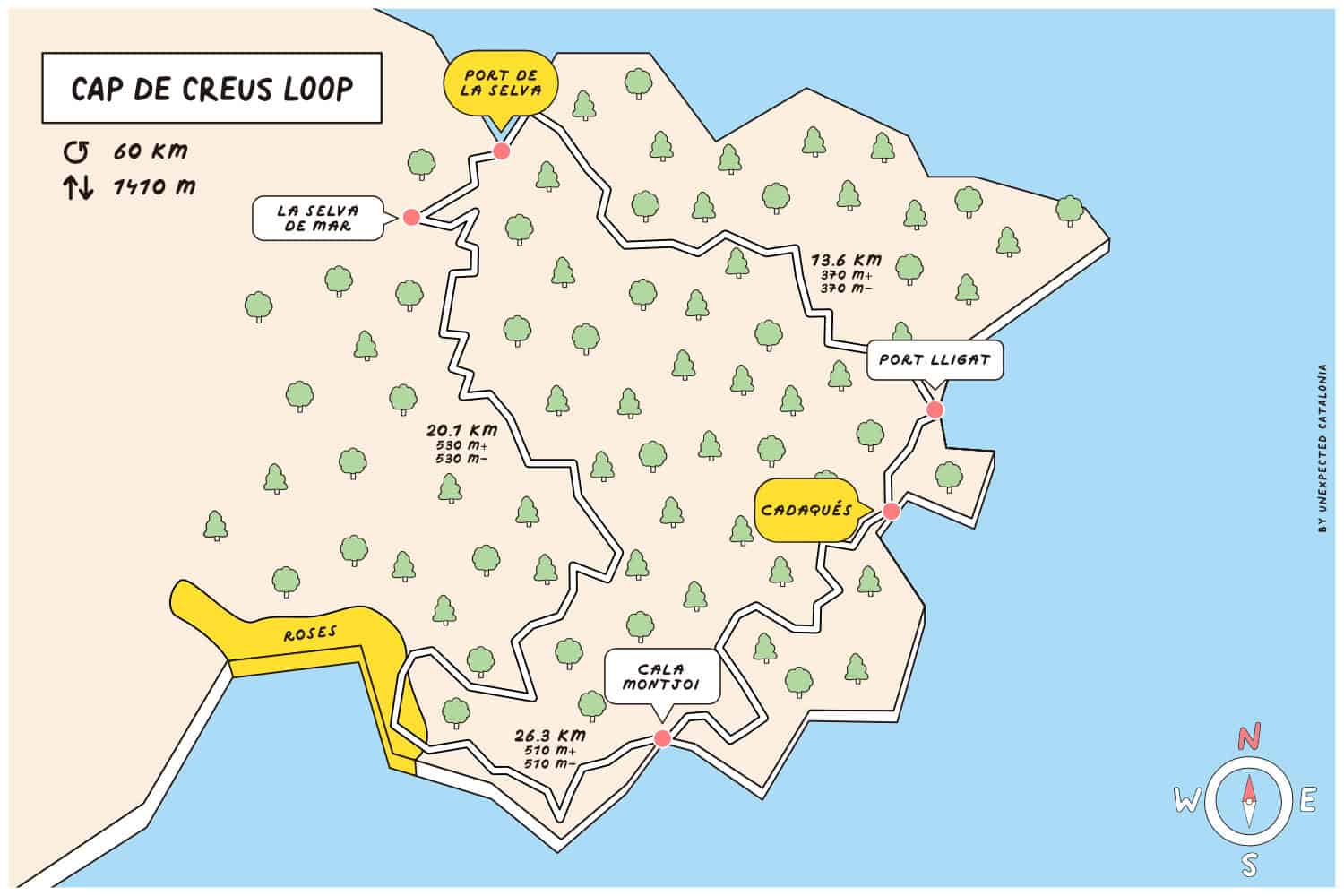
How to get to the start of the route
🚗 By car
The easiest and fastest way to any of the three possible starting points is by car.
Roses is 2 hours’ drive from Barcelona and 1 hour’s drive from Girona. Free parking spots are available on the outskirts of the city.
Cadaqués is 2 hours 15 minutes’ drive from Barcelona and 1 hour 15 minutes’ drive from Girona (the road is winding). Free parking spots are available outside the city centre. However, they are almost always full in high season.
Port de la Selva is 2 hours 10 minutes’ drive from Barcelona and 1 hour 10 minutes’ drive from Girona. A big free parking lot is right next to the main beach and the city centre, which is very convenient.
🚌 By public transport
That said, you can also get to the start of this route by public transport (if you don’t have your bike). You’ll have to start in Roses, where you can rent a mountain bike at Cicles Empordà.
Two buses each day cover the journey from Barcelona (the airport or Estació del Nord) to Roses. The trip takes around 2 h 15 min (from Estació del Nord) and around 3 h from the airport.
Our experience cycling the Cap de Creus loop (Costa Brava)
Day 1: Port de la Selva – Cadaqués – Roses
Port de la Selva to Cadaqués, 13.6 km, 370 m+, 370 m-
We woke up early, jumped into the car, and reached Port de la Selva around 10 am. We left the car in the free parking lot in the village and started the 17-km ride that separated us from the next town, Cadaqués.
As soon as we left the village behind, the road started ascending. Nice way to warm up the legs for the day ahead!
Luckily, the road unwinds next to the coast, and the views of the Mediterranean Sea are beautiful. The first gem already appears in less than 10 minutes: Cala Tamariua. When we were there in May, there were many wildflowers, and it looked like we were on some tropical island.
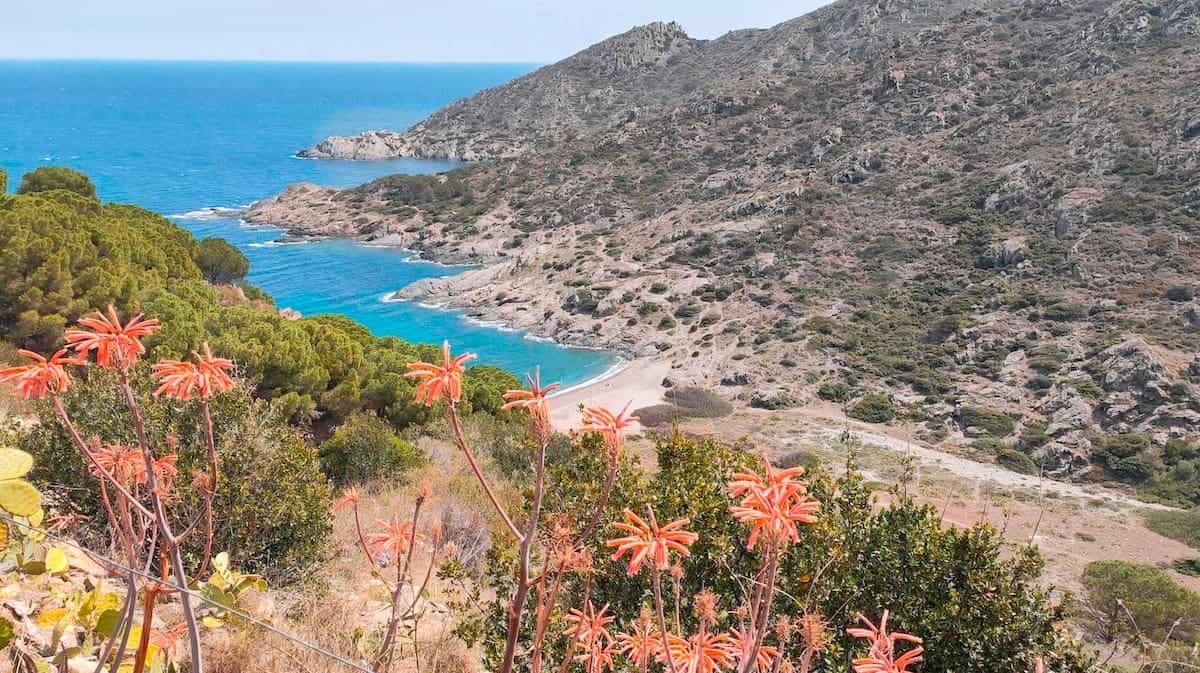
After some more metres, it was time to enter the Cap de Creus Natural Park. The road disappeared and turned into a dirty road, still easy to cycle. From this point on, we were just surrounded by nature until Cadaqués. No buildings, no roads… just pine trees and cows happily grazing.
The route was pleasing, except for some downhills, where we had to get off the bike and hike-a-bike because it was too rocky. But they were short sections. After a while, we stumbled upon an old farmhouse, Mas Vell, which is now in ruins.
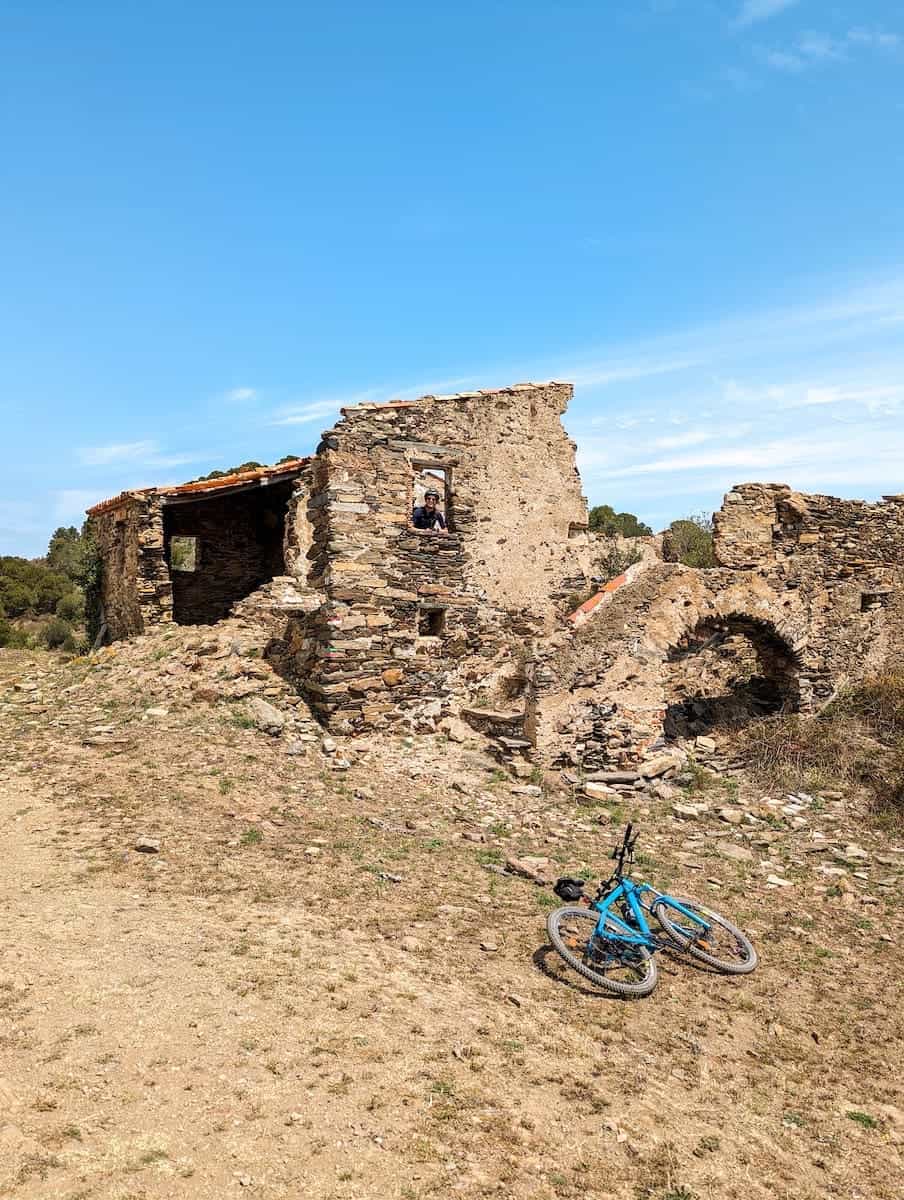
After the ruins came a rough descent and a steep hill. We did the descent slowly and carefully but had to get off the bike and carry it during the ascent. This was the only point during the whole route that we had to carry the bike.
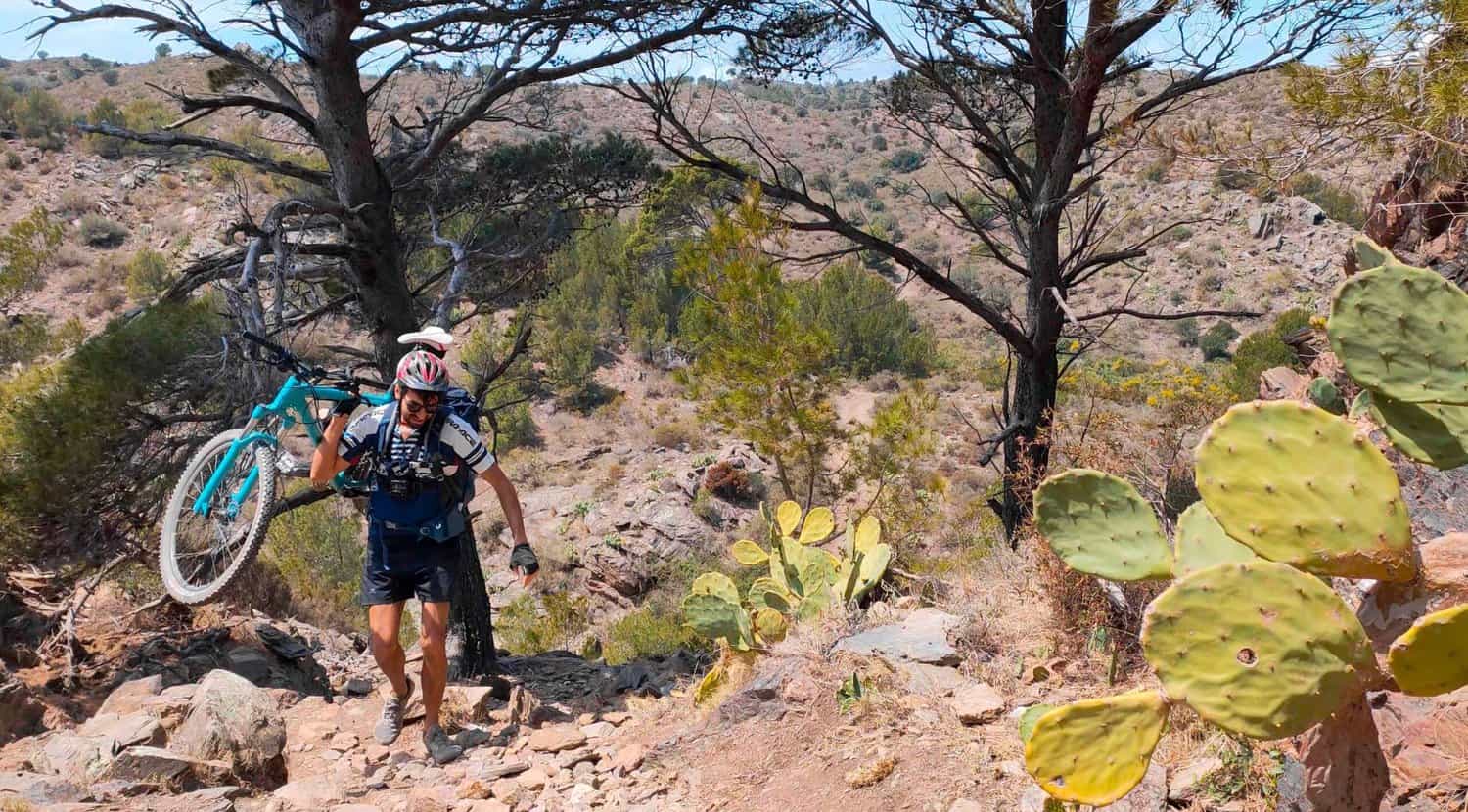
One km later, we reached the top of the hill and found a little surprise: a directional sign with a cow’s skull on top!
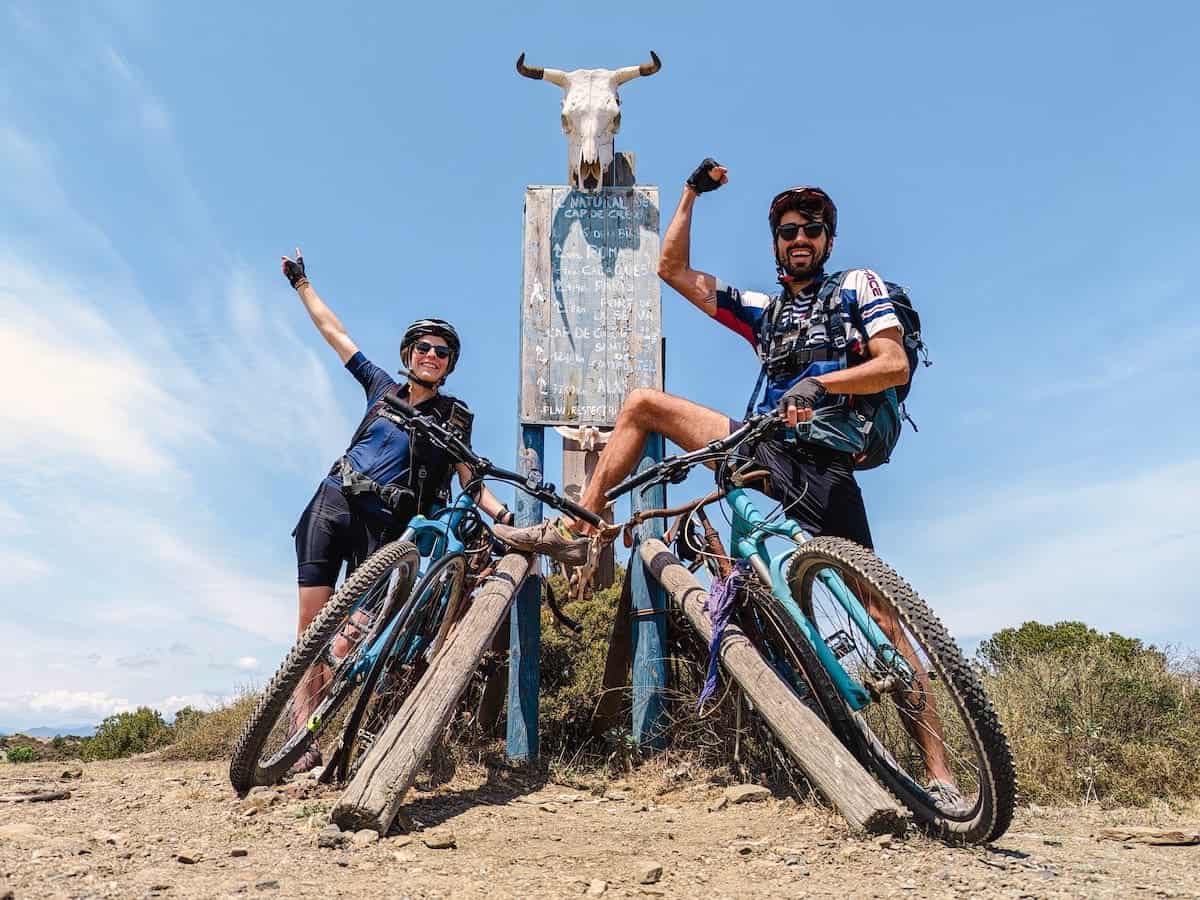
From here on, it was time to enjoy the descent! Three km of pure joy until seeing civilisation again and cycling on asphalt. We were in Portlligat, where Salvador Dalí lived and worked until 1982. His house is now a museum, open most days of the year (see opening hours). We didn’t visit it, but you can do it if you plan it in advance.
Visiting Dalí’s house 🏡
You can visit Dalí’s house, famous for its giant egg sculptures. If you want to do so, keep in mind that you cannot buy tickets there; you must make the reservation in advance. On the visit day, you must pick up your ticket 30 minutes before the hour stated, or you will lose your spot. The visit lasts around 50 minutes and is not guided.
We stopped at the picturesque beach in Portlligat for a quick snack. The views were breathtaking, and we loved all the small wooden boats in the sand.
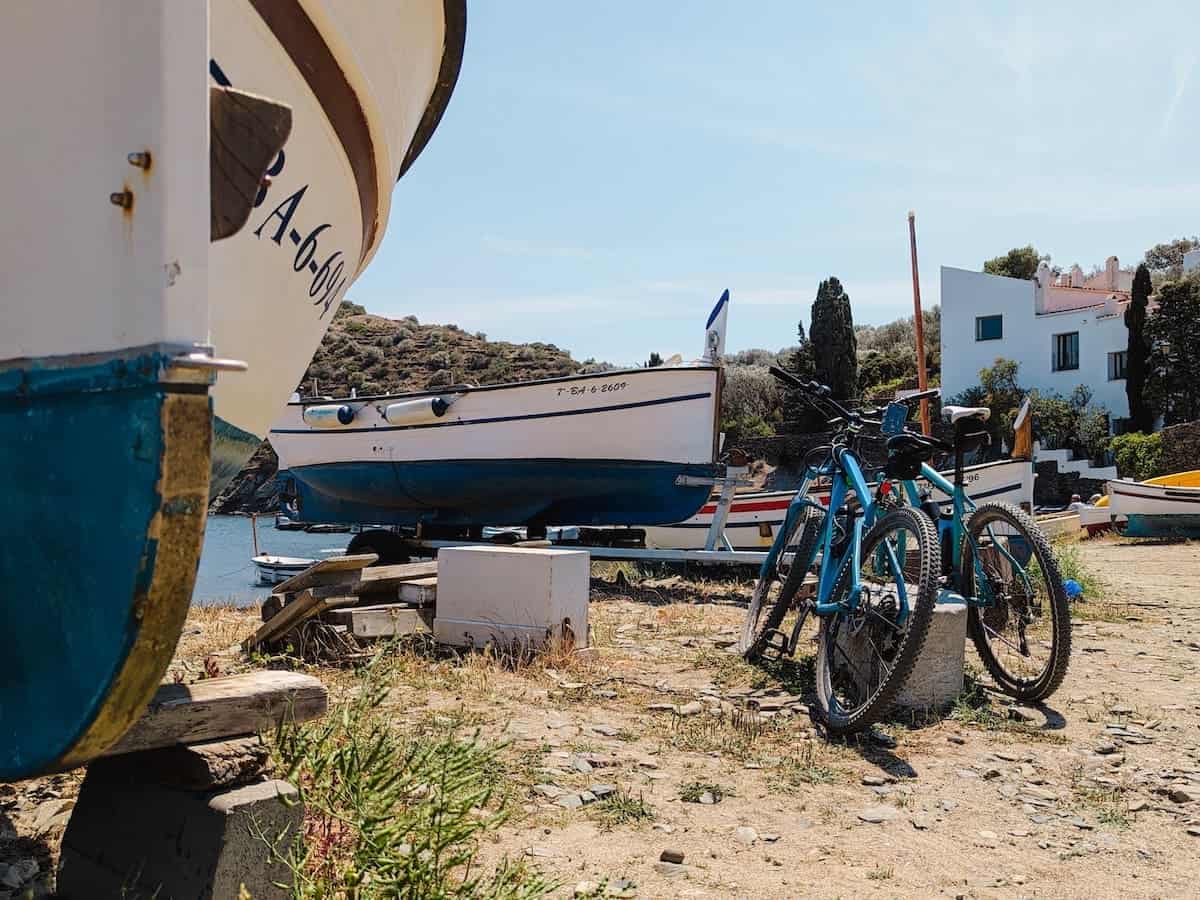
Only a km and a half separate Portlligat from Cadaqués, so we were there in the blink of an eye. The entrance to Cadaqués was spectacular as we descended through a narrow street and suddenly, when it ended, we appeared at the bustling seafront avenue. People were strolling, enjoying drinks at the terraces overlooking the sea, and devouring ice creams.
Cadaqués to Roses, 26.3 km, 510 m+, 510 m-
We found a place to sit in the shadow and enjoy a well-deserved picnic with front-row sea views!
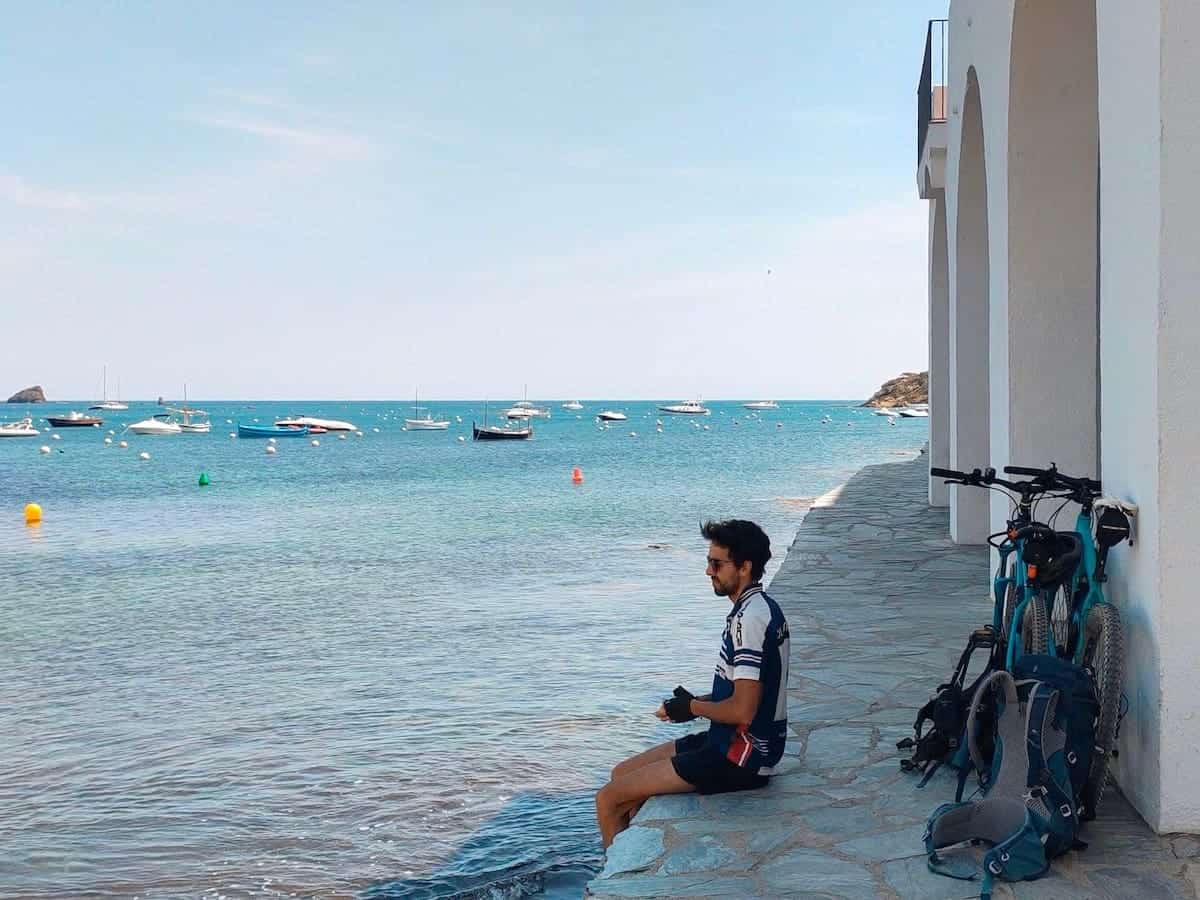
After the break, we explored the narrow (and steep!) streets of Cadaqués. It was a wonderful surprise to arrive at the Santa Maria church and enjoy the view from above over Cadaqués and the sea, accompanied by the notes of a talented guitarist (Manuel Segura) who usually plays there.
We loved Cadaqués during the low season, but it was time to continue the adventure. And what better way than with a 3-km hill? That said, the views of Cadaqués from the top were well worth the effort.
After that, we ascended and descended on dirt roads until Cala Montjoi. This is a beautiful cove and a culinary world reference point, as it was home to El Bulli restaurant, now a museum and a gastronomy laboratory.
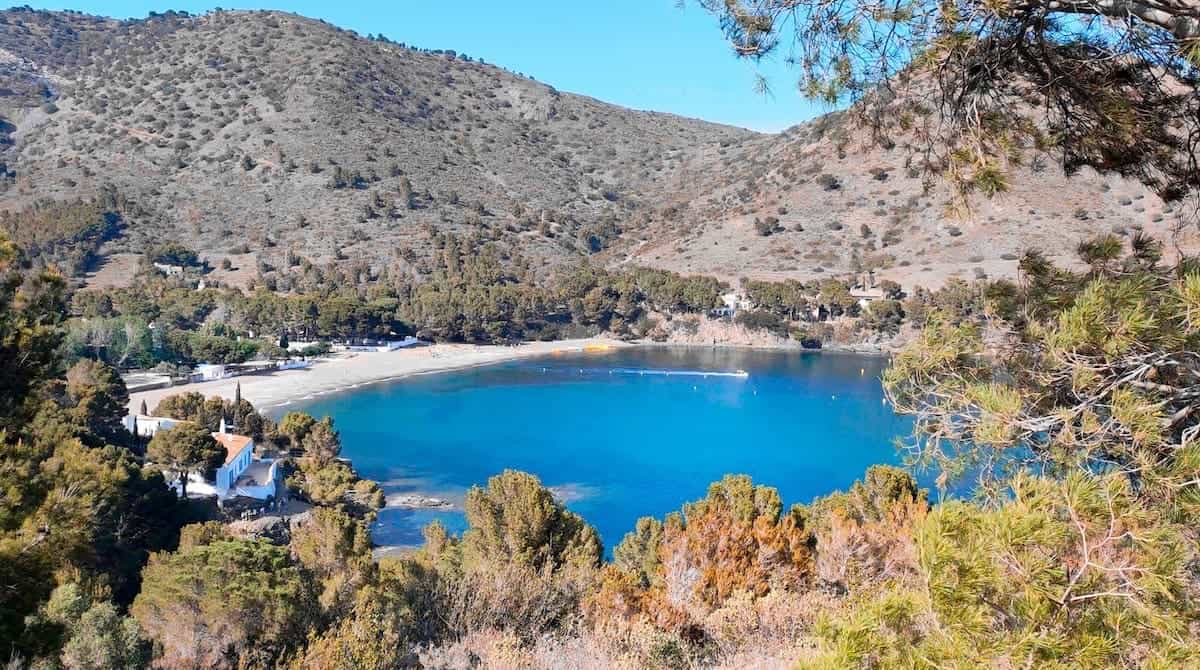
We were exhausted, but it was time to face the last ascent of the day. Luckily, it was on asphalt. Once on top, we could enjoy incredible views of Roses and its bay.
We made it! We then rode through the streets of Roses and stopped at Salatar Beach for a dip before getting to the accommodation.
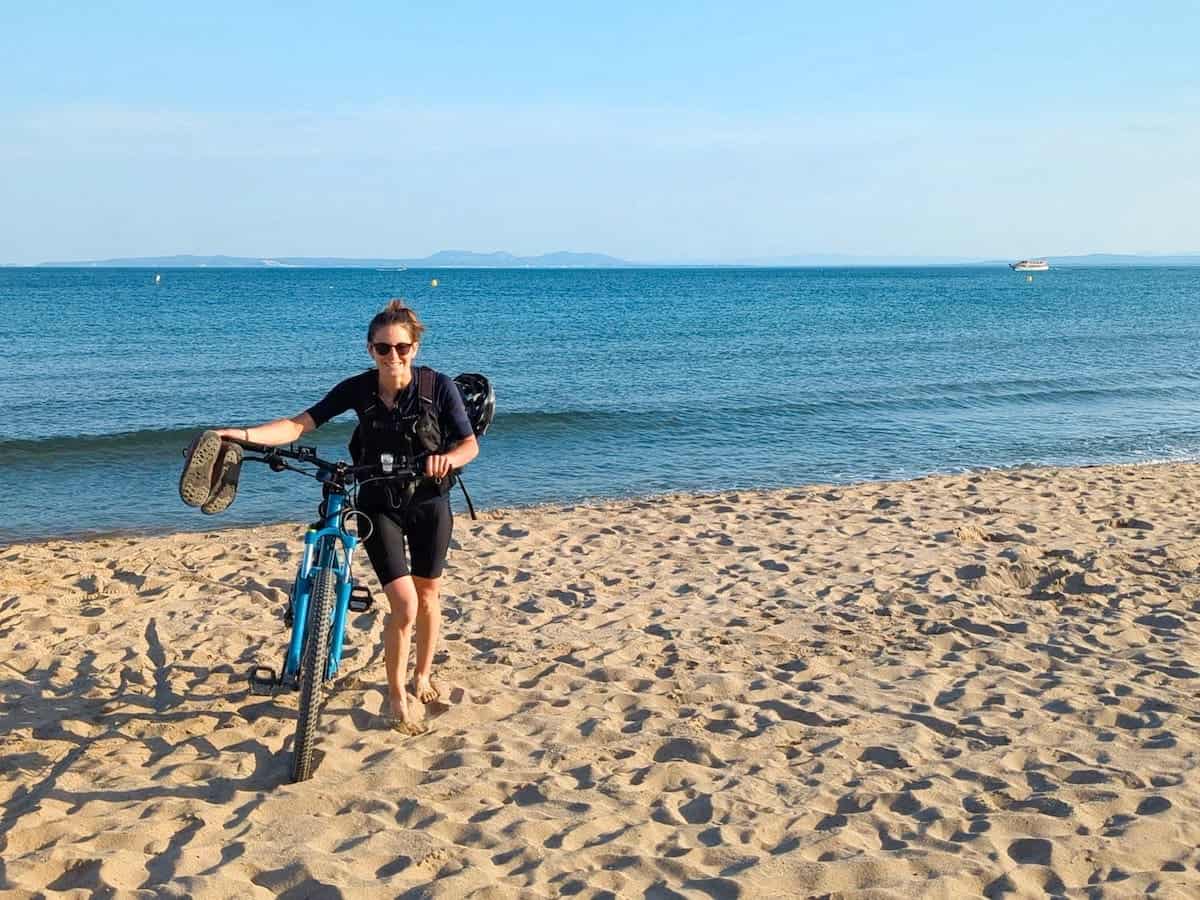
We stayed at a basic but cute glamping tent at Camping Rodas. As soon as we arrived, we ran into the shower (what a treat!) and dressed for dinner. We were starving! The only problem was it was Monday, and most restaurants were closed.
We ended up in La Tagliatella, a chain restaurant serving Italian food. We devoured the pizza and pasta dish, enjoyed a lovely walk back to the campsite and fell asleep in seconds.
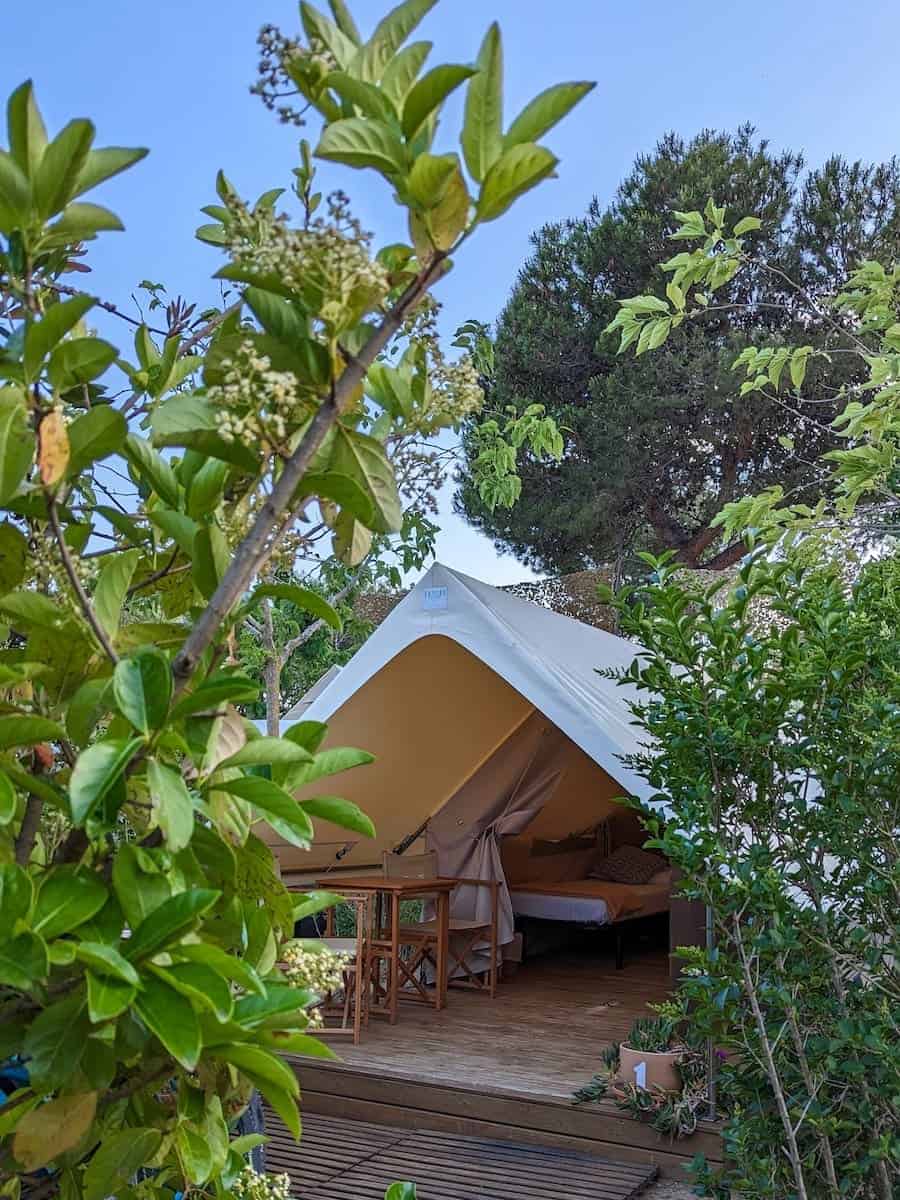
Day 2: Roses – Port de la Selva
Roses to Port de la Selva, 20.1 km, 530 m+, 530 m-)
After a restful night, we jumped on the bikes again. But before pedalling, we grabbed breakfast at a supermarket and enjoyed it at the beach.
With the batteries charged, it was time to cycle! The route started with an 8 km uphill. The first part was asphalt, and it passed by some vineyards overlooking the sea.
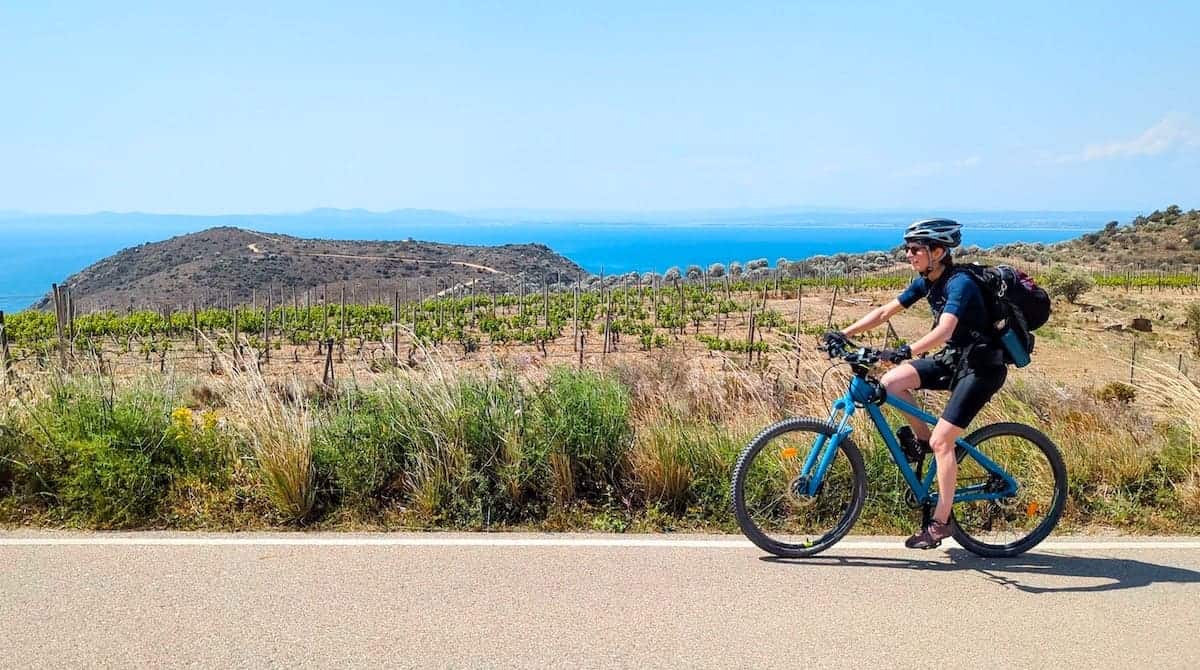
Then, we left the vineyards behind and entered a dirt road. We were slowly gaining altitude, and the hill seemed never to end. It was hard, but the views of the mountains and the Bay of Roses were incredible and gave us the energy to keep pedalling! Finally, we reached the highest point of the route: Puig Alt (492 m).
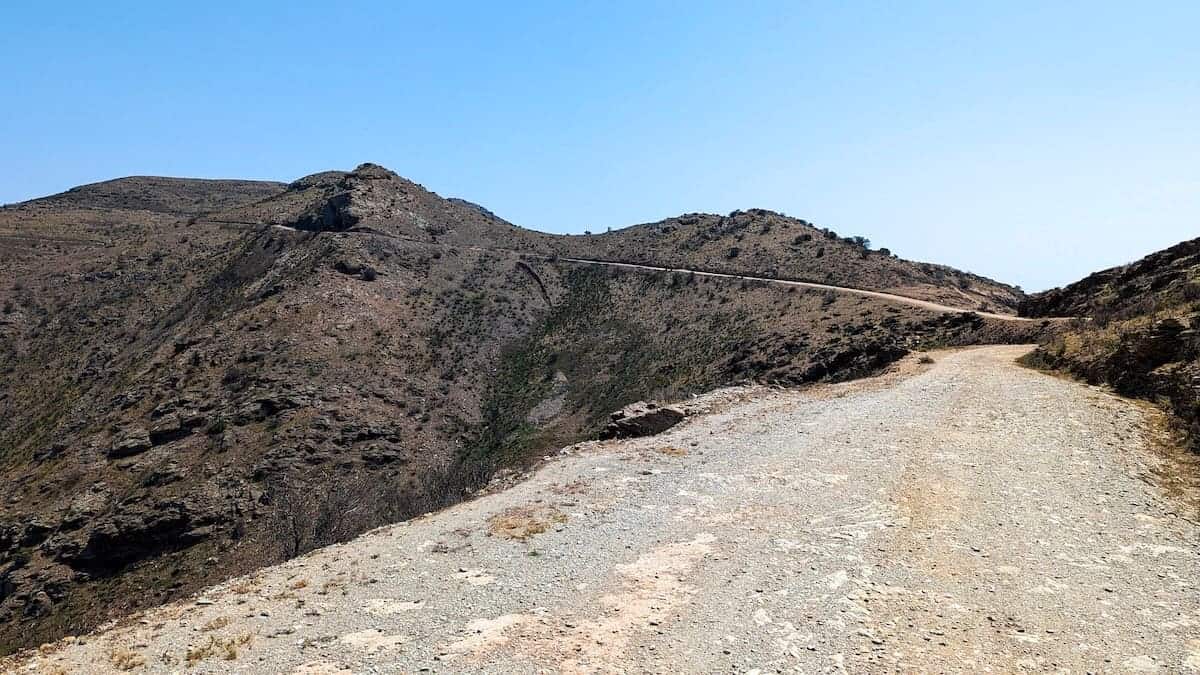
Then, came the descent. We passed by the Pení military base, used nowadays to control aerial traffic.
The next 3 km were on asphalt, and it was the part we enjoyed the least because there was quite a lot of traffic and the road was pretty narrow. Luckily, it was only for a short amount of time, and we were soon back on a wide dirt road that brought us straight to the charming village Selva de Mar.
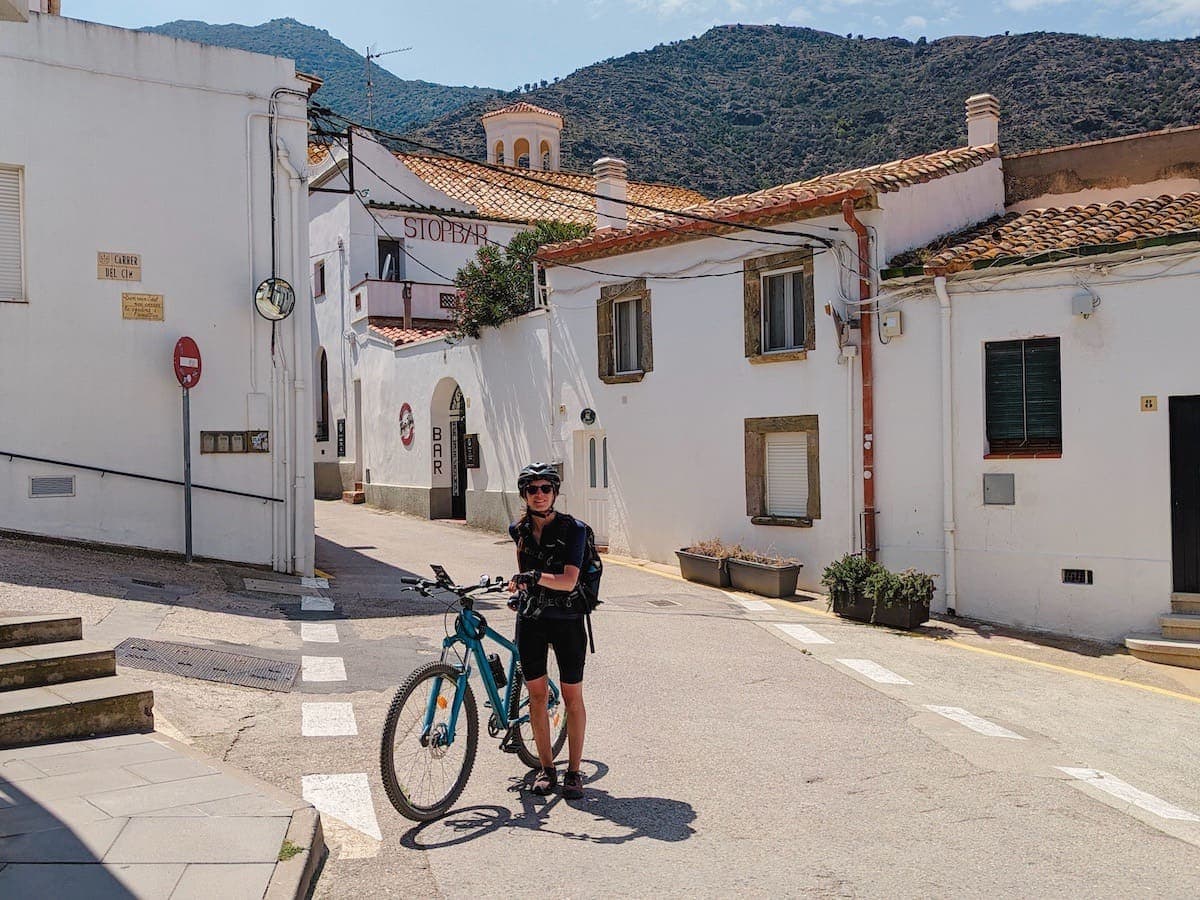
After a short break, we tackled the 2.2 km that separated us from Port de la Selva, bringing us back to the start of the route. We had made it!
We bought food and enjoyed it at the beach. Once recovered, we strolled around the village, visited the Sant Pere de Rodes monastery, and finally enjoyed a much-deserved dinner at L’Escata before driving back home. It was the best way to end this adventure!
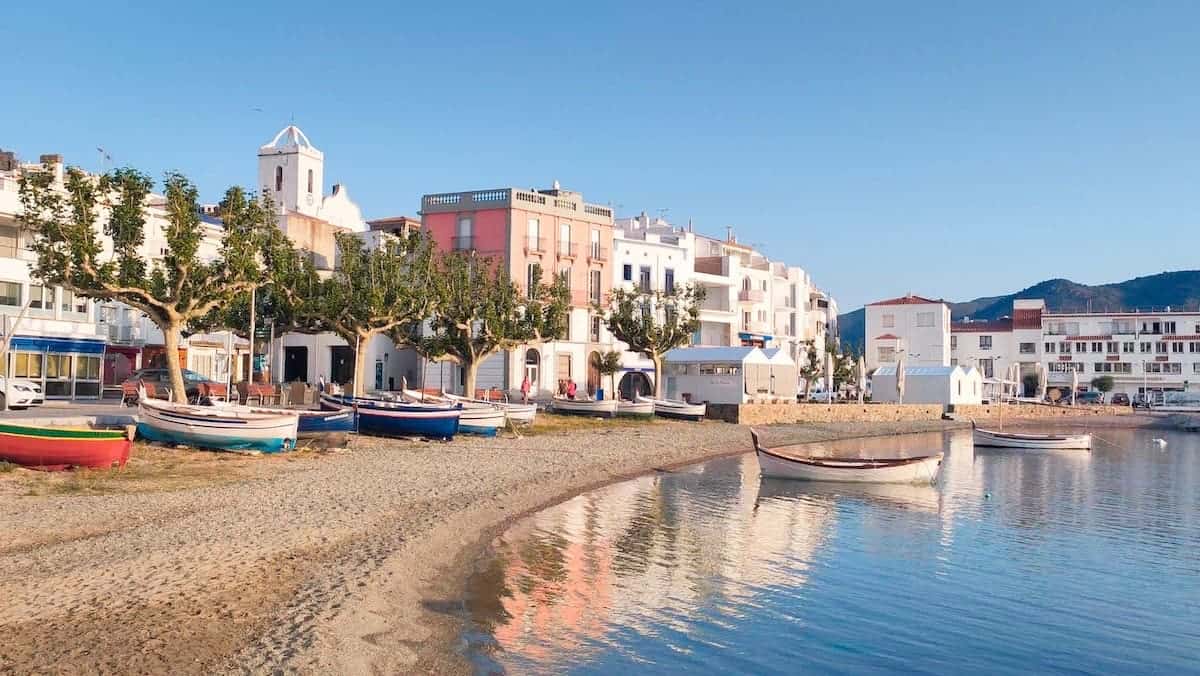
Where to sleep when cycling the Cap de Creus loop (Costa Brava)
Roses
We slept in a cute glamping tent at Camping Rodas. It was basic but clean and had a nice outdoor deck. We loved the campsite facilities and the location, as it was within walking distance of the city centre.
Another fantastic option in Roses is the 1935 Hotel Boutique. It’s a lovely boutique hotel with a swimming pool, professional staff, and a delicious breakfast with local products.
If you’re looking for an apartment where you can cook and recharge your batteries, we recommend Castell Blau (with a pool and endless sea views), Capvespre (terrace with views of the harbour), and La Rosella (with a pool and close to the beach).
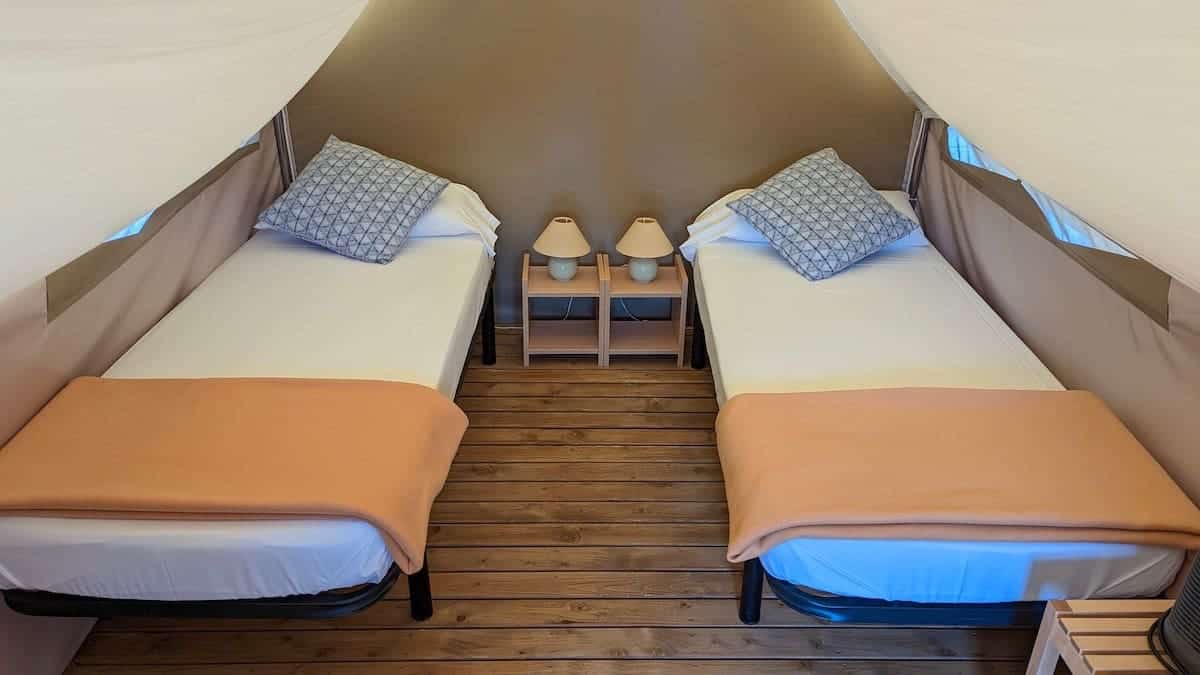
Cadaqués
Wonderful options for a night in Cadaqués are Hotel Misty (with a swimming pool and within a 10-minute walking distance from the centre) and Hostal El Ranxo (right in the city centre).
If you’re seeking a serene, adults-only retreat, Arrels Hotel Cadaqués is a perfect choice, offering breathtaking views over Cadaqués and a tranquil swimming pool. Another top-notch option is Tramuntana, nestled in the old town of Cadaqués.
If you prefer an apartment, we recommend Can Jove, a rustic apartment with a beautiful patio where you can enjoy a BBQ and a terrace with sea views. Another option is Canvas Apartments, a series of modern flats right next to the town centre.
Port de la Selva
The accommodation options in Port de la Selva are pretty limited.
We’ve stayed several times in Hotel Spa Porto Cristo. The rooms are good, the beds are comfy, and a delicious breakfast buffet is included with the price. A great thing about this accommodation is that it’s conveniently located less than a block from the main village’s sandy beach.
Where to eat when cycling the Cap de Creus loop (Costa Brava)
This route is full of places to enjoy a great meal. So, whether you’re spending the night in Roses, Port de la Selva, or Cadaqués, you’ll have plenty of options. Here are our favourites in each place:
Roses
- Bel’A Ciao: If you fancy a pizza, this is the best place in Roses to get one. The ingredients are fresh, the pizza is authentic Neapolitan, and the owner is very passionate.
- Restaurant Sumac: An excellent place if you’re looking for fine dining. The dishes are creative, made with local ingredients and absolutely tasty.
- La Barretina: Small family-run restaurant where you can enjoy excellent fish and seafood.
Cadaqués
- Restaurante El Barroco: This Lebanese restaurant is so cool! Its interior looks like a collectionist museum, and the yard is great for enjoying an al fresco dinner.
- Chirashi Cadaqués: Tiny Japanese restaurant making fresh and colourful sushi and poke bowls.
- Can Cabrisas: This isn’t a restaurant but a traditional bakery—ideal if you get hungry during your stop in Cadaqués! If you want to try something local, order taps de Cadaqués, traditional sweets in a champagne cork shape.
Port de la Selva
- L’Escata: This is where we ate to celebrate finishing the route! The fish was super fresh and delicious, the staff was very friendly, and the views were amazing.
- Can Pepitu: We’ve been there more than five times and love it! This restaurant serves original and tasty tapas and has a beautiful terrace overlooking the harbour. It’s open every day except Mondays.
- Cal Mariner: Beautiful restaurant with a big terrace. We love its pastís de peix de roca (a kind of paté made with rockfish) and fideuà (similar to a paella but with pasta).
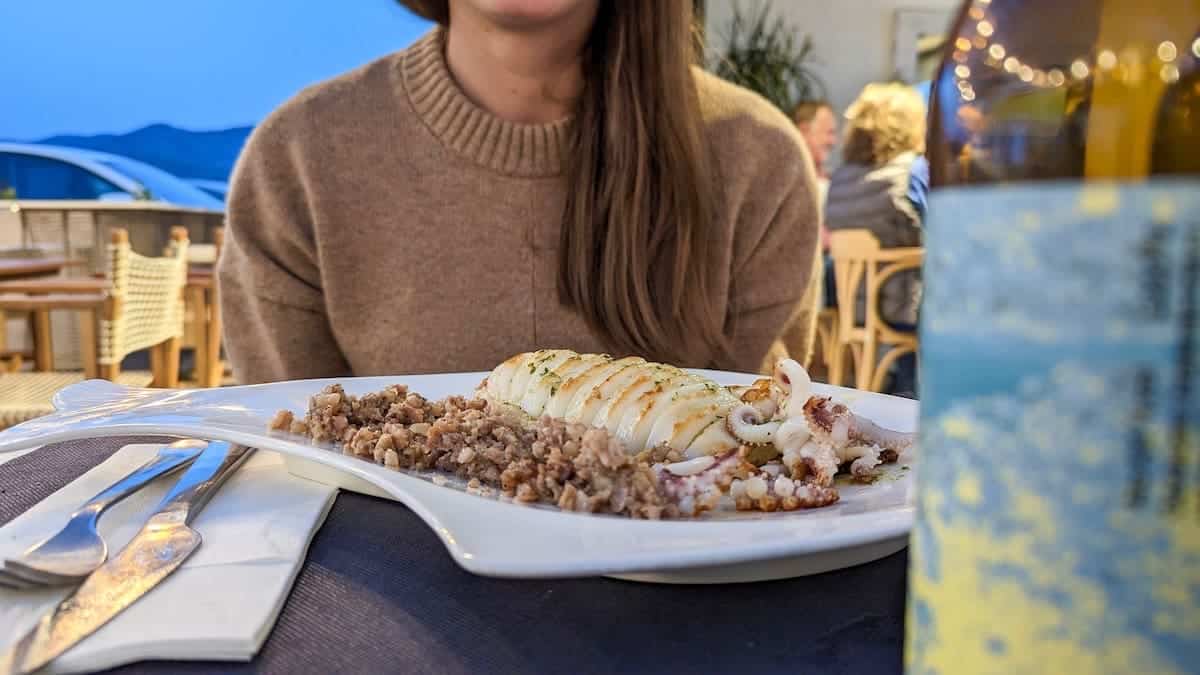
Things to take into account when cycling in Costa Brava
🧴 Grabbing sunscreen (reef-friendly!) and a cap or hat is a great idea. It was cloudy when we biked this route, but we got sunburned anyway.
🌬 Cap de Creus is a region known for the Tramontane wind, so we recommend packing a wind stopper and checking the wind speeds when planning the route. You can do so using Windy.
🎒 Pack light! Our bikes had no bags, so we fit everything in a 25-L backpack. We packed a pair of pyjamas, a set of casual clothes for dinner, a shirt for the second day of cycling, a towel, a swimsuit, flip-flops, sunscreen, water, a cap, and toiletries.
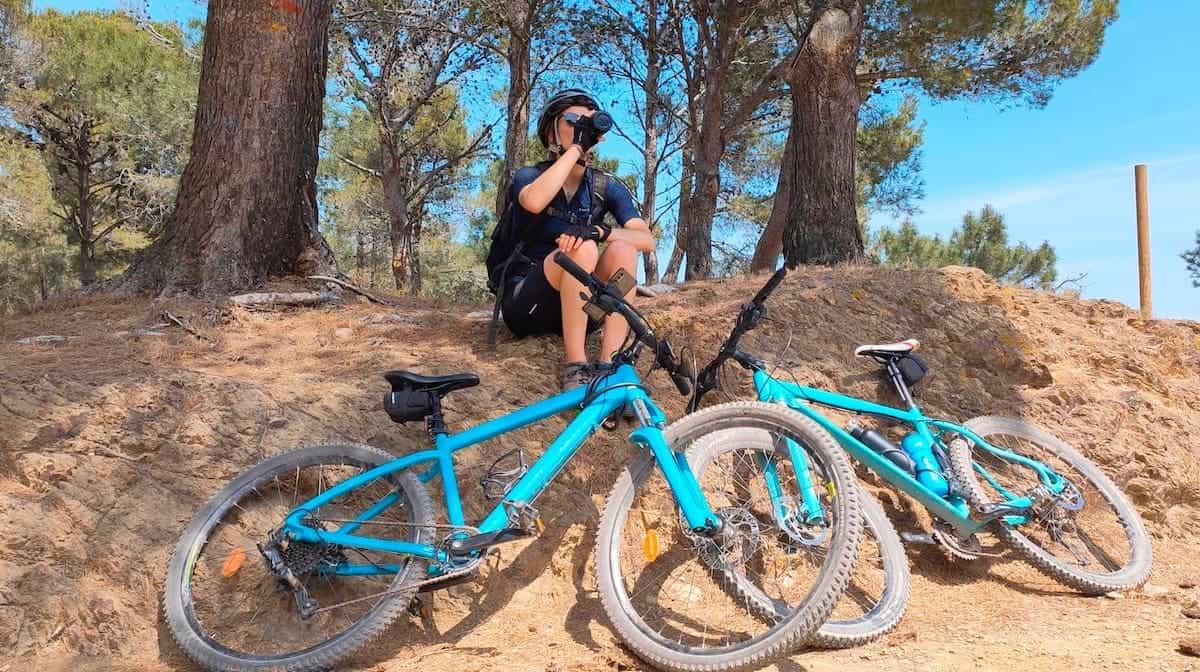
We hope this guide helps you experience the magic of cycling in Costa Brava and enjoy Cap de Creus’ scenic views and landscape.
For more ideas on what to do in Costa Brava and how to plan your trip, check out our entire Costa Brava collection.

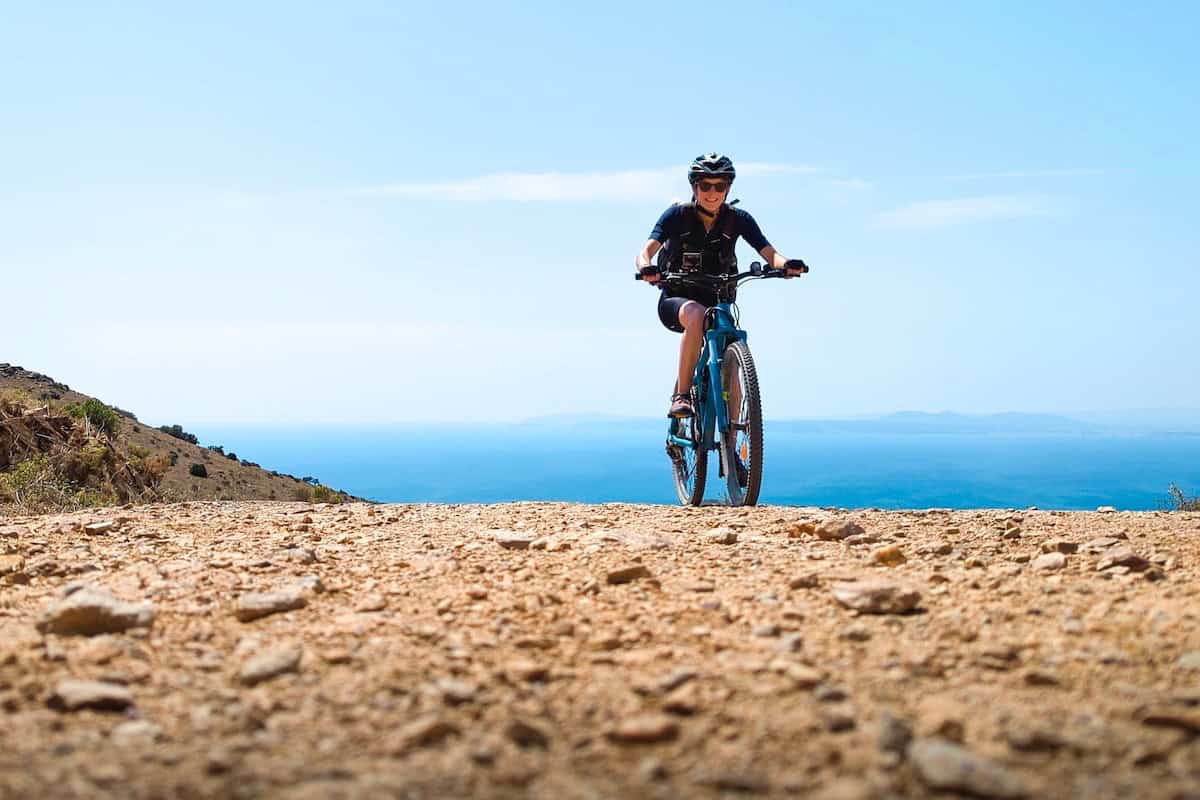
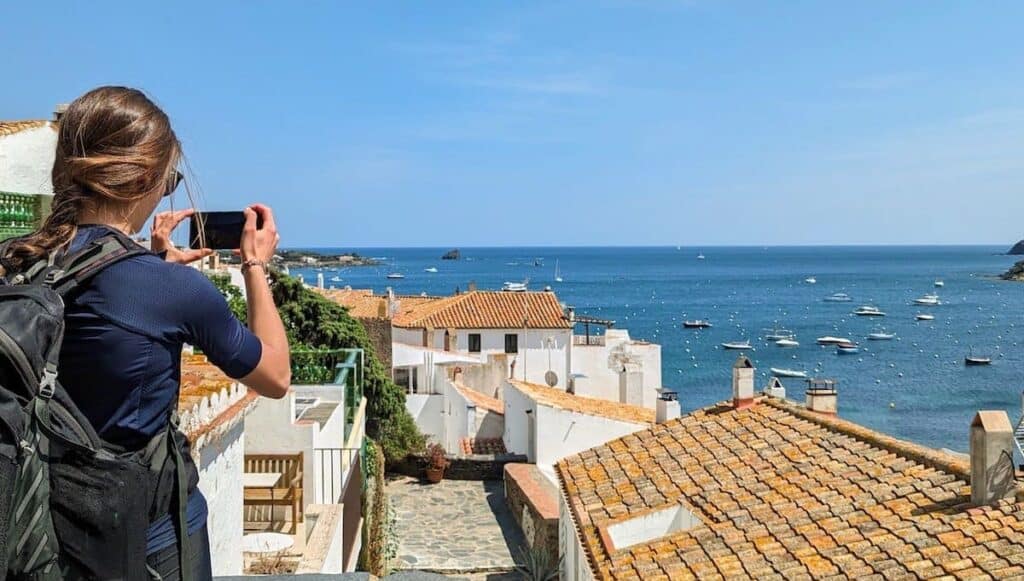
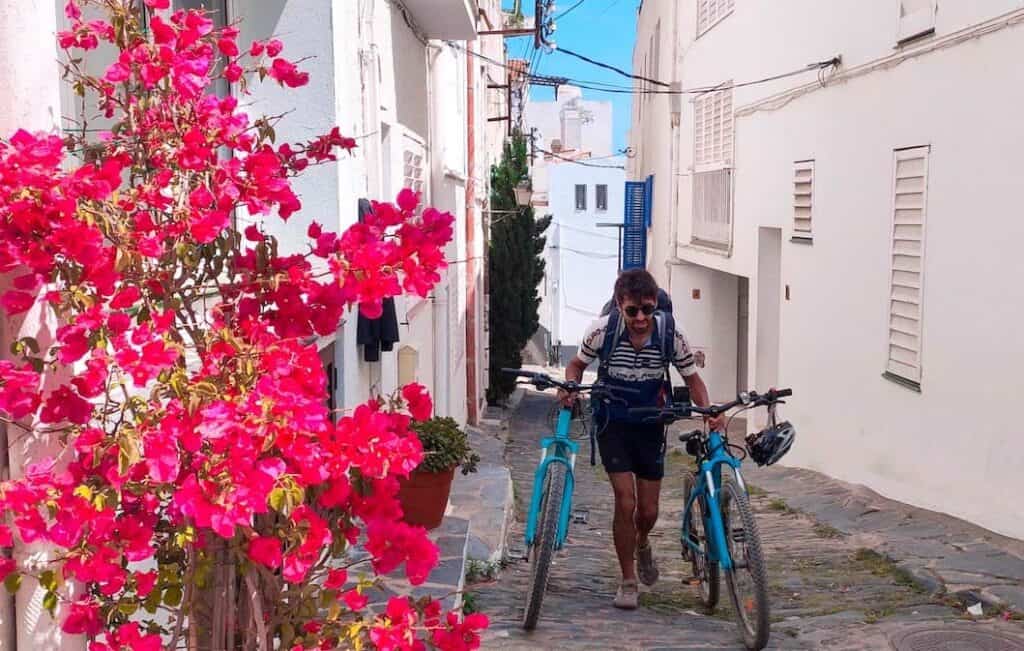
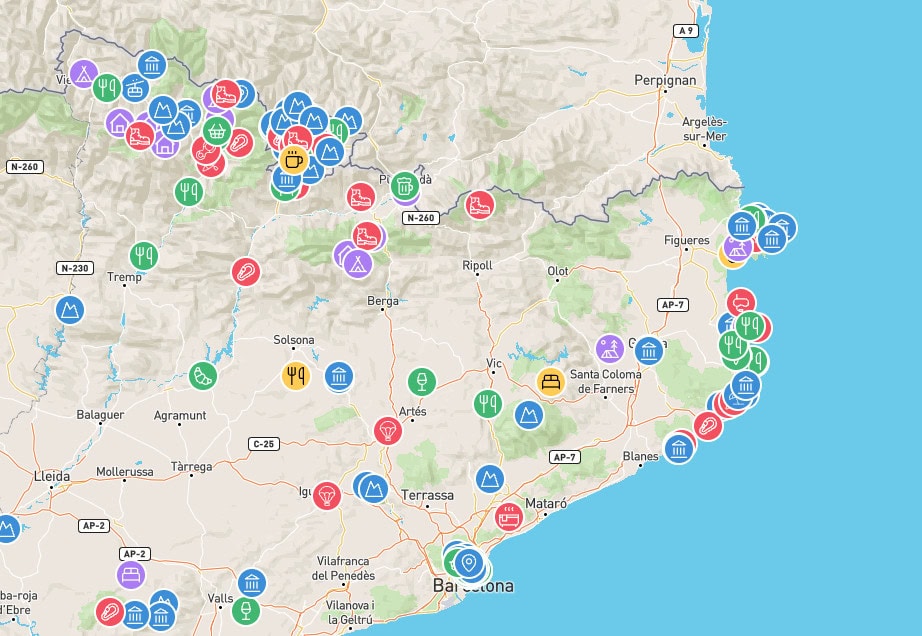
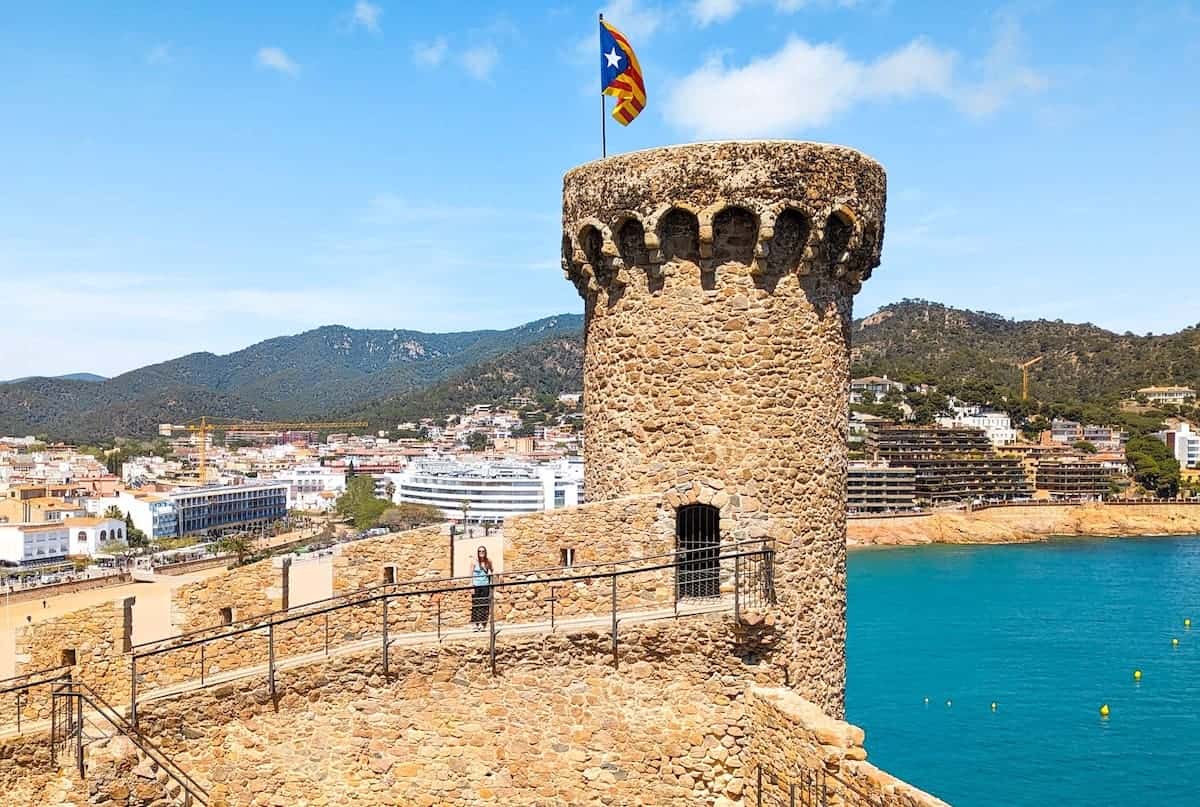
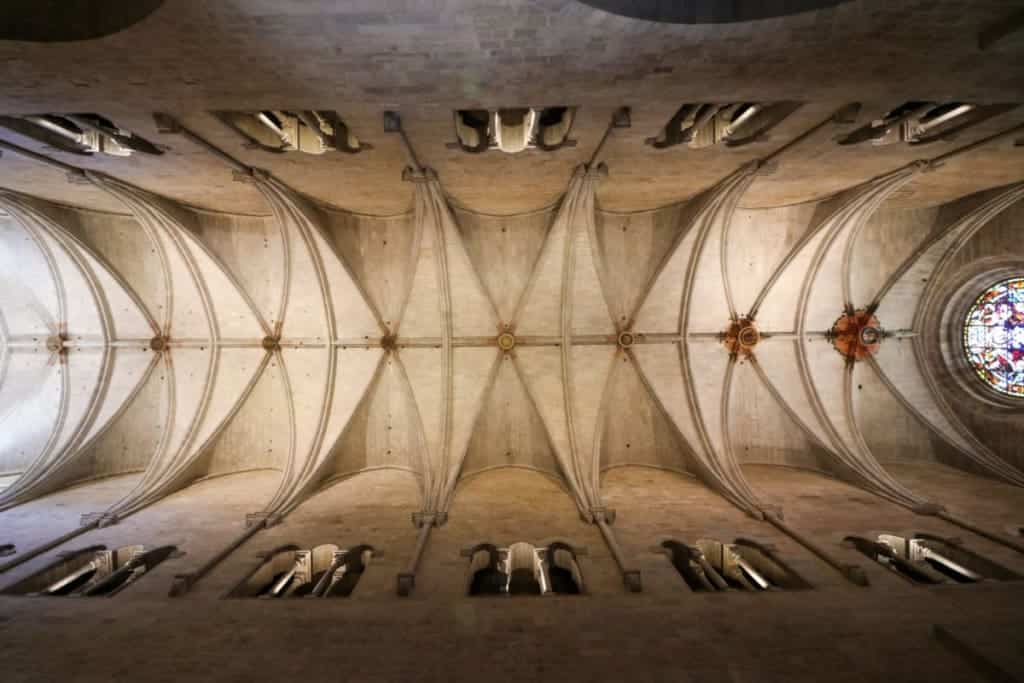
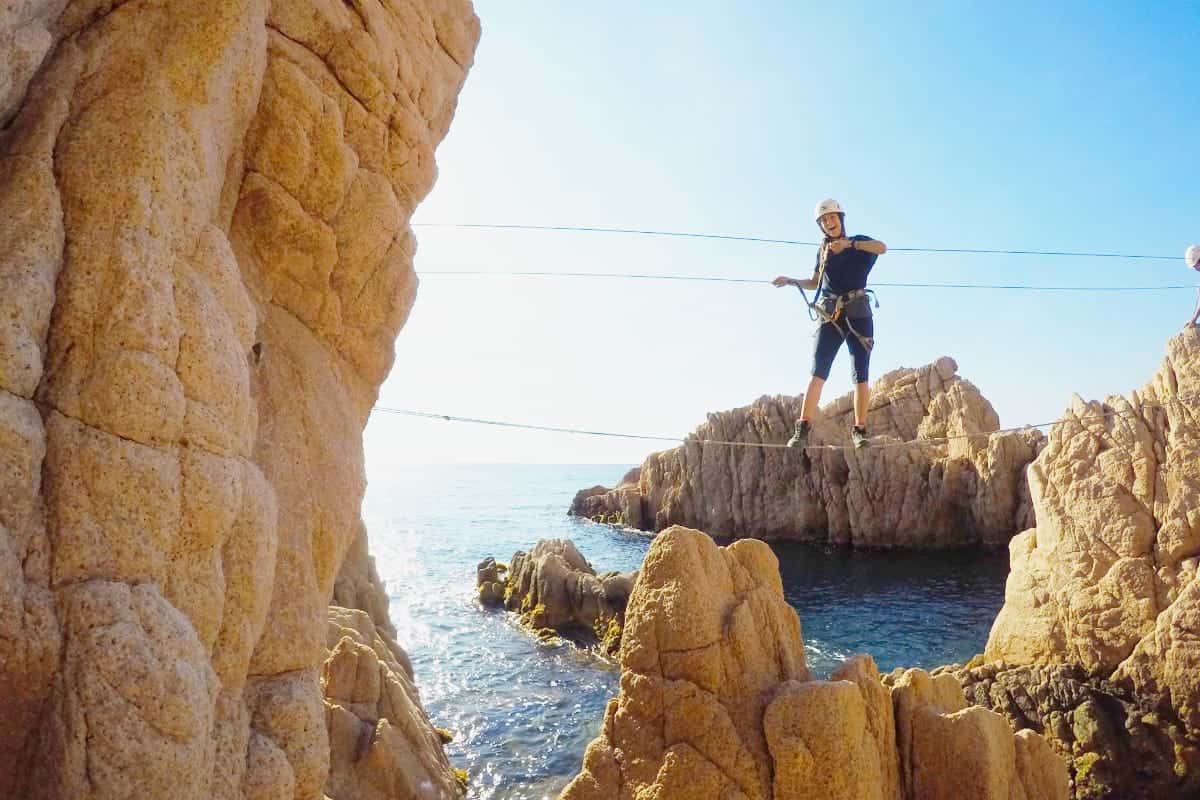
0 Comments